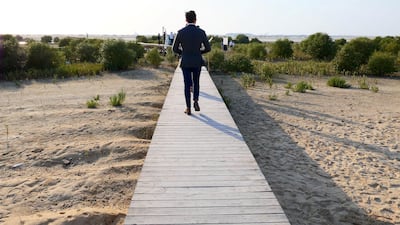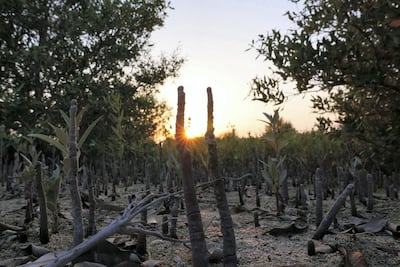On Monday, Emirates Marine Environmental Group (EMEG) and Procter & Gamble inaugurated what is soon to be a lush green haven along the desert coastline of Dubai.
Dubai Mangrove Forest is located at the Jebel Ali Wildlife Sanctuary. According to an official statement, the location is a United Nations protected reserve that is being managed by EMEG and has been included in the Ramsar List of Wetlands of International Importance.
The initiative is in line with Dubai's plan for more than half the city to be transformed into natural reserves by 2040. It has also been developed in collaboration with The Storey Group and EcoMatcher, which launched the One Billion Trees Initiative this year.
What can you find at Dubai Mangrove Forest?
A total of 1,000 mangrove trees have been planted along a stretch of Dubai coastline to create a lush green space, and that number is set to grow in the coming months.
P&G has announced that it intends to plant more saplings and adopt mangroves that are four or five years old, to maximise the carbon sequestration in the months to come.
According to Ali Al Suweidi, founder and president of EMEG, the aim is for the 500,000-square-metre area to be blanketed by greenery. When the tide is high, a large portion of the area will be covered with water.
The area also comprises coral reefs, seagrass beds and a natural beach that form part of a breeding ground for endangered species of turtles.
“Last year, we had 46 turtle nests along this beach. This year, we have 32 so far, with that number hopefully set to increase soon,” says Al Suweidi.
Other than turtles, the location will be home to 40 species of birds, as well as species of smaller fish and crabs, says Karen Storey, chief executive of The Storey Group.
A single wooden ramp or boardwalk has been built at the destination, allowing those who visit to get a better look at the mangrove forest and its wildlife.
Who is allowed to visit?
As of now, Dubai Mangrove Forest is not open to the general public.
In order to protect the sanctuary and its wildlife, a visit to Dubai Mangrove Forest can be made by invitation only. At the moment, there will be a focus on educational school trips and corporate team building.
“We will be organising trips for a small number of people at a time. It is especially good for children so they can learn to take care of the environment. They are the future and we want to pass these lessons down to them,” says Al Suweidi.
According to Al Suweidi, it may open to the public as early as after Eid Al Fitr, with online bookings required to make a visit.
Plant a mangrove – and 'chat' with your tree
One of the key aims of the new destination is to encourage the planting of more mangroves and increase green spaces in the UAE.
As part of this initiative, schools and companies will be invited to plant saplings and learn more about their importance for the ecosystem.
P&G has teamed up with EcoMatcher, which will allow people to visit the destination virtually. Through the use of blockchain technology, people will be able to view and keep tabs on their individual trees online.
“We will have an app that will allow people to ‘chat’ with their mangroves,” says Storey.
“Through the app, you will be able to ask your tree where it lives, what its height is, what it’s currently doing and what impact it’s having on the environment. It’s an integrated technology to engage with the customers and employees.”















